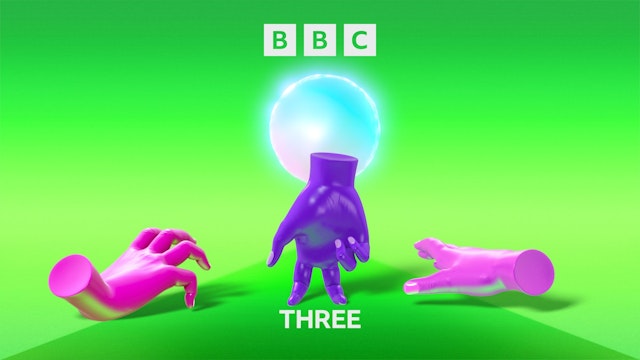As BBC Three returns to linear TV, creatives react to its brand refresh
The BBC’s youth-skewed BBC Three channel returned to linear TV last night after six years online-only. And to coincide with the relaunch, it got a fresh set of idents. We asked the creative industry’s thoughts on the relaunch.
Known for award-winning comedy Fleabag, Sally Rooney’s Normal People and Stacey Dooley meeting various drug dealers and sex workers, BBC Three has earned a distinct reputation on British TV.
For its first night back on air, BBC Three ratings peaked at 375,000 views and debuted RuPaul’s Drag Race: UK versus the World, launched new sketch show Lazy Susan and aired long-running dating show Eating With My Ex.
BBC Creative and agency Superunion were tasked with creating a new look and feel for the channel.
The Drum asked the creative industry what it makes of the BBC Three relaunch...

Katy Sumption, executive creative director at Atomic London, calls the idents “bold, playful and progressive.”
“BBC Three’s new brand device sets the channel distinctively apart from its more grown-up counterparts,” she says. “From the unapologetic color palette to the cheeky character behavior, it’s a joyfully fresh approach from the BBC that perfectly represents the values of the channel and the challenger content it offers.
“There’s so much potential in what this fun and vibrant trio get up to and I hope to see it fulfill the fluidity it offers as it grows and adapts along with its fast-paced audience.”
Impero chief strategy officer Chris Tyas says: “Stacey Dooley won’t save the BBC from becoming irrelevant, nor will BBC Three’s new idents.
“The BBC is in a unique position to provide progressive programming beyond the narrow confines of current mainstream populist content. Therefore it is largely disappointing to see the new indents are more of a reflection of younger youth culture rather than leading a more progressive agenda.”
Tyas continues: “While the soundtrack offers the more progressive tones we expected from the BBC, the cartoon animations seem to be aimed at a post-CBBC audience. The idents’ ability to appeal to a post-tween audience seems limited at best.
“Let’s face it – what self-respecting 20-year-old wants content designed for a 16-year-old?”
Tom Ewart, founder and chief creative officer at The Corner, says he wanted more “layers” and “intrigue” from the idents.
“Those little things you spot after multiple viewings. I felt this treatment could handle that. I’m a big fan of Robert Strange, and watching these I found myself wishing they were a bit more, well, strange.”
But perhaps there’s more to come? NFT hand anyone?
Ewart did praise the “surrealist twist,” and adds: “Watching the underwater one I couldn’t help thinking of Virgil. The octopus hand would look good in a Louis Vuitton window with a bag draped over the tentacle.”
Damon Collins, founder of creative agency Joint, says the BBC has “sold themselves short.”
He says: “BBC Three is a place where real risks are taken and the commissioners are really good at their jobs. When you look at Fleabag and Normal People they are daring pieces of work and that is what the branding needs to stand for.
“They are nicely-crafted bits of CGI, but nothing about them makes me think, here we go, strap in, here’s something you’ve never seen before.”
Tom Primrose, lead brand strategist at Curious, says: “I can’t quite work out if this is brilliant or very, very weird – or maybe a combination. The important thing about idents is not the initial impression but the long-term association. We’re assessing these creepy, Addams Family-style creations out of context.
“BBC Three is known for its irreverence, originality [and] youth-focused content, and these will be right at home there. I have every belief these characters will capture the attention of the gen Zers at which they’re aimed, and sooner or later will become synonymous with the channel.”

